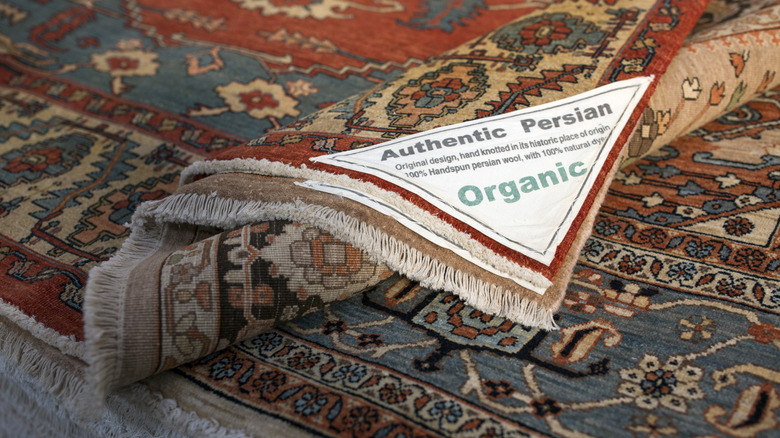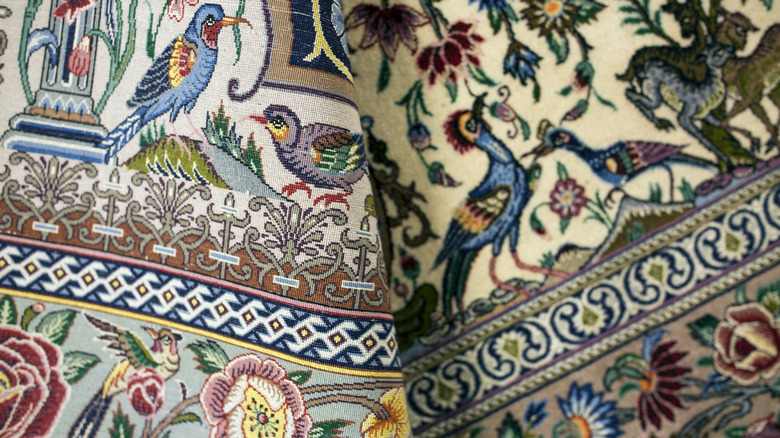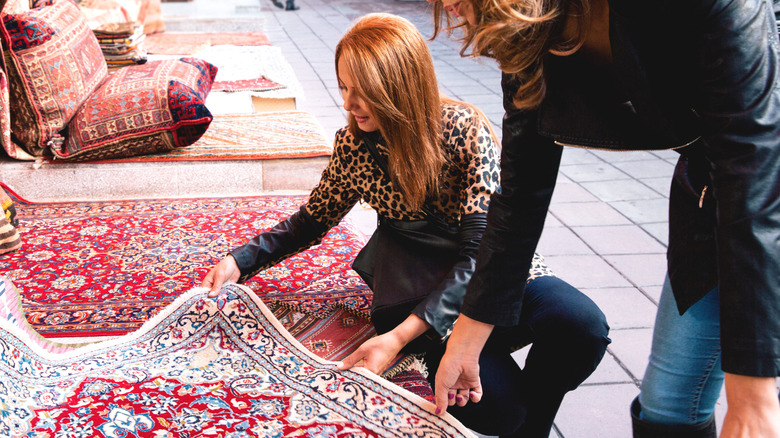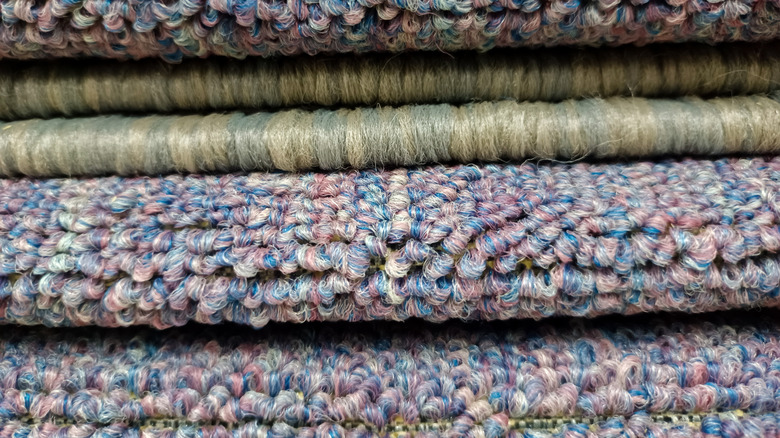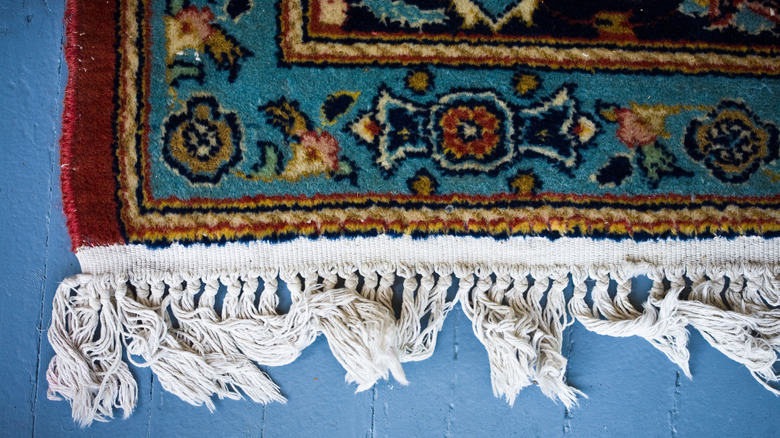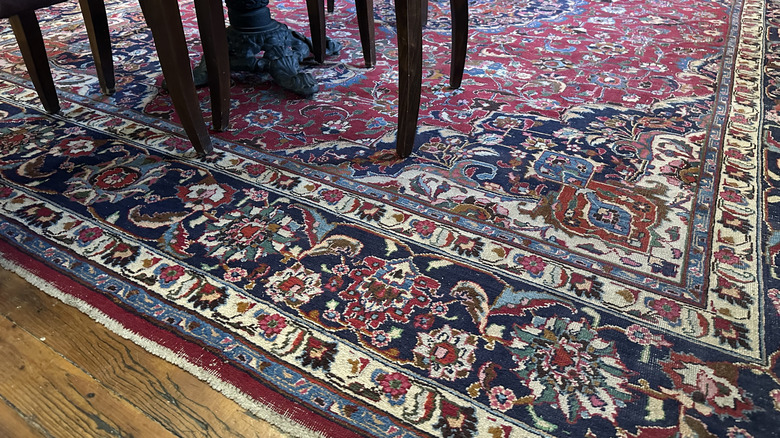Is The Persian Rug You Got At The Thrift Store The Real Deal? 7 Easy Ways To Tell
Persian rugs are known for their intricate patterns, vibrant colors, and expert construction. This style of rug, originating in Iran, has a rich history. Common patterns have evolved through the ages to reflect changing cultures and dynasties. These rugs are loved by collectors worldwide, so if you find one at the thrift store, you've struck gold. That's if you know how to tell if your bargain buy is authentic.
Thrift store items are often shrouded in mystery, but finding unique pieces at low prices adds to the fun of thrift shopping. However, some things are more valuable than others. When it comes to rugs, how do you know if you've found a vintage treasure that's worth buying at the thrift store? There are several factors that determine whether you've scored an authentic, vintage Persian rug, including materials, patterns, and construction. These key details can clue you into its age and origin. A piece's value varies greatly depending on its age, size, materials, and condition, but many vintage Persian rugs are worth hundreds and even thousands of dollars. If you're simply choosing an area rug for your home, a vintage Persian one is a gorgeous piece of history to have.
Check for uniqueness in the design
The charm of a vintage Persian rug lies in its uniqueness. Because authentic Persian rugs are handmade, no two rugs, including reproductions, are exactly alike. Traditionally, Persian rugs are not reproduced in different sizes at all but are made only once. If you find a rug at the thrift store that looks authentic, try taking a photo and performing an image search. If you find identical rugs for sale online, you'll know the piece is not vintage.
Check for asymmetry in the intricate pattern
There's beauty in imperfection. While Persian rugs are meticulously crafted by skilled artisans, there's just no way for a handmade rug to be perfectly symmetrical. That's one of the reasons this vintage decor item will never go out of style. To check for symmetry, compare each side of the rug's design. If you can spot small imperfections or inconsistencies, there's a good chance you found an authentic Persian rug. Unfortunately, if the piece is perfectly symmetrical, it was most likely woven by a machine.
Examine the knot structure
Authentic, vintage Persian rugs are knotted by hand. It's a laborious process that results in a higher-quality piece than machine-made rugs. Check the reverse side of the rug for singular knots. This is another opportunity to check for imperfections in the rug's construction. Hand-knotted rugs will inevitably have some irregularities in the knot structure. The pattern on the reverse side of a vintage Persian rug will also mirror the pattern on the front. If the pattern is not the same or there is a plastic or mesh backing, the rug is not authentic.
Determine the materials used
Vintage Persian rugs are made from natural fibers. The rug's surface is usually made from sheep's wool, while the back, or warp, can be made from wool or cotton. Some higher-quality rugs are made from silk, a material that is easily identified by its glossy sheen. Examining the material of the rug is also a way to determine whether the piece is vintage. Look for faded colors and irregularly worn patches. Irregularities in a rug's wear and tear indicate that it has aged naturally rather than being intentionally distressed.
Check the height of the pile
Measuring its pile height, or its thickness, is another way to tell if your rug is truly a vintage treasure. It may seem contradictory, but high-quality, traditional Persian rugs are actually thinner than modern rugs. Creating a thin, flat rug by hand takes a great deal of experience and skill. This tight and precise knotting creates a durable structure. Vintage Persian rugs are usually less than ¼ inch thick.
Examine the back of the fringe
A closer look at a Persian rug's fringe will tell you if it's vintage. Traditionally, the fringe that runs along opposite ends of a Persian rug is made from the ends of the warp yarn. These could be tied off or left loose. Check the back of the rug in question. If the fringe appears to be sewn on, it's a good sign that the rug is modern or machine-made.
Evaluate the design to determine the rug's origin
The final test is to look for common patterns. There are several design motifs to be aware of if you're in the market for a vintage Persian rug. These motifs also reveal where a piece was made. Traditional rugs from the city of Kashan, Iran, often feature stylized floral motifs. The Heriz style, originating in Northwest Iran, usually includes a central medallion design surrounded by floral and geometric patterns.
